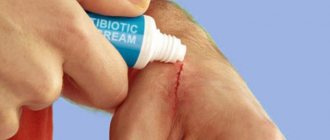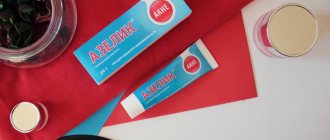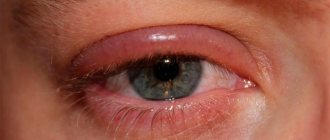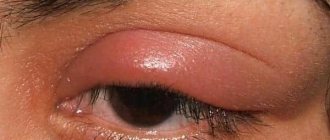A wound is damage to the skin and underlying body tissues. Such damage can be caused primarily by mechanical stress, as well as by the influence of excessive temperature or chemical factors. The wound healing process is absolutely physiological and occurs independently: the body, using natural mechanisms, restores the integrity of tissues and integuments, thus protecting internal organs. The only thing that can ensure faster wound healing is stimulation of regeneration processes and the elimination of the development of complications.
What types of wounds are there?
The healing process and time of damage largely depend on its type. Wounds, according to the factors that caused them, are divided into the following types:
- puncture wounds are injuries caused by a thin object pointed at the end (an awl, a knitting needle), which are distinguished by significant depth in relation to width. In the vast majority of cases, puncture wounds practically do not bleed and this can cause a dangerous misconception that they are not dangerous and, as a result, late seeking medical help. In fact, with a stab wound, damage to internal organs is often observed, as well as internal bleeding, often intense. In this case, blood accumulates, for example, in the abdominal cavity. A narrow wound channel blocks the access of oxygen to the damaged surface, which becomes fertile ground for the development of extremely dangerous gangrenous bacteria;
- incised wounds are injuries caused by a narrow, pointed object. They can also penetrate to a considerable depth, but, unlike stab wounds, they bleed much more, since in the process of inflicting such a wound a large number of blood vessels are damaged. The edges of such a wound are smooth;
- chopped wounds are injuries inflicted by a heavy pointed object (axe, shovel). The edges are often uneven, crushed, the wounds are usually deep;
- lacerations - usually occur with intense mechanical impact on a large area of skin. The edges are uneven, often the skin peels off from the underlying tissues with the formation of a scalped wound, and intense bleeding is not uncommon;
- Bite wounds are wounds that occur as a result of the impact of the teeth of an animal or a person on the body. On the teeth, as a rule, there is plaque with specific microorganisms, which often provoke significant inflammation in the wound;
- Contusion wounds are wounds caused by blunt force trauma. The skin and underlying tissues in the damaged area often become dead. Bleeding is usually minor, interstitial with the formation of a hematoma;
- A gunshot wound is a wound caused by a firearm. It is characterized by significant damage to the tissue around the wound channel due to the impact of bullet energy on them, as well as the presence of particles of clothing and gunpowder in the channel;
- burn wounds are wounds caused by exposure of the skin to thermal energy or concentrated alkalis/acids. The intensity of damage to the skin and underlying tissue depends on the severity of the burn.
Sores in the mouth as a sign of aphthous stomatitis
Wounds in the mouth can arise as a result of the development in a person of a separate independent disease of the oral mucosa, caused by the growth and development of pathogenic microorganisms. But, in addition, the cause of such wounds may also be hidden in the general somatic condition of an adult or child.
In most cases, mouth ulcers are symptoms of a disease such as canker sores. Stomatitis is a lesion of the human oral mucosa that occurs as a result of an atypical reaction of the immune system to foreign irritants. Depending on the nature and causes of the disease, stomatitis can be of various types: ulcerative, herpetic, allergic, vesicular, etc. But people most often have to deal with the aphthous form of this disease.
Let's name the main symptoms of aphthous stomatitis:
- The appearance of round ulcers (ulcers) in a person’s mouth, which are grayish in color and surrounded by a red, inflamed rim. Ulcers are located either separately or in groups and have different sizes.
- Painful sensations in the affected areas of the upper and lower palate of a person that occur during eating, drinking, or talking.
- Deterioration of a person’s general well-being, weakness.
- Temperature increase. But this is not a mandatory symptom; it occurs in most cases in children, since they are more difficult to tolerate aphthous stomatitis in the oral cavity.
- Enlarged submandibular lymph nodes. This symptom of aphthous stomatitis also occurs more often in children than in adults.
How does wound healing proceed?
Wounds with smooth edges that are brought together as close as possible, without infection, heal by primary intention. If the edges of the wound are uneven, the wound surface is large, or an infection develops on it, we speak of secondary intention. Of course, the first way is preferable; it helps prevent the formation of a rough scar.
Wound healing occurs in three stages. The first of them is self-cleaning of the damaged surface. It occurs due to the physiological reaction of increasing the permeability of the walls of blood capillaries in response to damage. As a result, part of the blood plasma is released into the tissue, which appears on the surface of the wound, helping to cleanse it of contaminants and microorganisms.
The next stage is the inflammatory process, a natural consequence of the presence of contaminants on the surface of the wound, as well as tissue damage itself, which is accompanied by cell death and intoxication of the wound. When healing by primary intention and high-quality cleansing of the wound, inflammation is minimal.
Following inflammation, the stage of regeneration begins, it is manifested by the proliferation of granulation tissue, after which epithelization of the wound occurs, that is, the formation of new integumentary tissues. According to some classifications, the phase of wound epithelization is distinguished as a separate stage of healing, while other experts consider it an integral part of the granulation process.
How to speed up wound healing?
First of all, you should remember: the process of wound healing is an absolutely natural mechanism, the wound heals itself, and a person’s task is not to interfere with this process, not to disrupt it in any way. However, it is possible and necessary to speed it up and avoid possible complications. To do this, it is necessary, first of all, to provide competent first aid to the victim. In addition, it is important to consult a doctor promptly. Sometimes there is no need to treat a wound in a hospital setting; treatment can be carried out at home, but consulting a specialist in any case will not be superfluous. The organization of the wound treatment process also plays an important role. If all conditions are met, the regenerative capabilities of the body will help to quickly eliminate the damage, and soon epithelization and granulation of the wound will occur.
What can be done to prevent sores in the mouth from appearing again?
Completing a course of timely treatment for aphthous stomatitis will reduce the risk of a similar disease of the human oral mucosa in the future, but in some cases it will not completely eliminate this possibility. This especially applies to situations where a person has a hereditary tendency to develop aphthous sores in the mouth, suffers from autoimmune diseases, and is prone to allergies.
In such cases, preventive measures are required:
- Enhanced oral hygiene. It involves not only daily brushing of a person’s teeth and gums twice a day, but also rinsing the oral mucosa with solutions of antiseptics or medicinal herbs in order to prevent stomatitis.
- Balanced diet. Reviewing the diet and diet will help saturate the human body with essential vitamins and microelements and reduce the risk of allergies that can cause aphthous wounds in the human mouth.
- Taking vitamin complexes. If it is not possible to compensate for the lack of nutrients in the body with nutrition, then to prevent stomatitis a person can regularly take vitamin complexes, the composition of which, doses and duration of administration will be determined by your attending physician, based on the results of the tests.
- Taking immunomodulatory drugs. Today, there are many remedies that stimulate the immune system and encourage the body to resist diseases. They can be either of plant origin or synthesized in the laboratory. The selection of such drugs is individual for each person and is carried out by a doctor.
- Compliance with preventive measures, timely treatment of the disease and following the recommendations of the attending physician will help a person avoid relapses of aphthous stomatitis and the reappearance of wounds in the mouth in the future. Be attentive to yourself and your health, listen to the signals that your body gives, and at the first signs of disease in the oral mucosa, seek help from a dentist.
You should not self-medicate stomatitis and use the advice of friends or information found on the Internet, since the exact cause of sores in the mouth and stomatitis can only be identified through diagnostic methods. And the selection of treatment is determined in accordance with the diagnosis, and in each case it is individual. Dentistry "LeaderStom" offers its assistance in the treatment of aphthous stomatitis and other diseases of the oral mucosa. Contact us and we will help you identify the cause of the disease and select medications accordingly.
At the first aid stage
The process of its healing in the future largely depends on how effectively and competently first aid is provided when receiving a wound. Therefore, as first aid you need:
- stop the bleeding,
- wash the wound, clean it of dirt and foreign bodies.
To stop bleeding, a tourniquet is used (when applied, be sure to indicate the time when it was applied) or a pressure bandage. It is advisable to wash the wound with an antiseptic solution, hydrogen peroxide (which, by the way, helps stop bleeding) or, in extreme cases, with clean water. It is important to remove any foreign particles from the wound surface - each of them can subsequently become a source of purulent inflammation and, as a consequence, complications of wound healing. Large debris, slivers, and fragments are removed using tweezers.
Doctor's consultation: when is it necessary?
It is recommended to see a doctor, even if the wound does not seem serious. In addition, there are a number of cases when you cannot do without the help of a specialist. Such cases include:
- continued bleeding from the wound - it may be necessary to stop it by ligating the vessel, applying a suture, or using a hemostatic sponge;
- foreign bodies remaining in the wound, contamination;
- wounds caused by heavily contaminated, rusty, painted, grease-coated objects;
- wounds with signs of inflammation;
- wounds caused by animals;
- suspicion of a fracture, dislocation, ligament rupture.
In addition, it is not recommended to try to use certain medications on your own. The doctor prescribes an ointment for wound epithelization.
What can affect the wound healing process?
In addition to the type of wound (wounds with smooth edges heal faster), regeneration processes directly depend on the condition of the body itself. Consequently, sufficient rest, good nutrition, intake of vitamins and minerals into the body, and giving up bad habits have a positive effect on wound healing. It should also be taken into account that there are a number of diseases that can significantly inhibit the healing process. These are endocrine diseases (in particular, diabetes mellitus); pathologies of the vascular system, which are accompanied by a decrease in the intensity of blood microcirculation; anemia; hypovitaminosis conditions; cachexia (exhaustion); some cancers; obesity; pathologies of the urinary system; liver diseases; skin pathologies, including those of an allergic nature; immunodeficiency states. Therefore, in the presence of such pathologies, attention should be paid to their treatment, or at least compensation - this will have a positive effect on the healing time and will ensure accelerated epithelization of the wound.
The purulent-inflammatory process that begins in the wound surface significantly slows down and complicates the healing process. Therefore, one of the most important tasks in wound treatment is the prevention of purulent complications. For this purpose, first of all, a thorough initial treatment of the wound by a surgeon is performed. During it, if necessary, dead tissue in the wound is removed, the edges are smoothed, bleeding stops, and the wound itself is thoroughly cleaned of clots, dirt, and foreign bodies. After this, surgical sutures are placed on the wound, or, if there is a need to monitor the wound, it is left open (in this case, sutures will be applied later). The treated wound is covered with a sterile sticker or bandage, which prevents additional trauma to the wound surface and its contamination. Also, in order to prevent purulent complications (or if purulent inflammation has already begun), antibiotics may be prescribed to the victim.
The use of ointments with an antimicrobial effect - for example, Sulfargin - plays a major role in accelerating the healing of a superficial wound, which does not require the intervention of specialists. The active substance of the drug - silver sulfadiazine - has an antibacterial effect, which is prolonged due to the gradual release of silver ions from the ointment. In this regard, one application of the drug per day is sufficient. Sulfargin not only has an antiseptic effect, but also keeps the wound in a moderately moist state under the bandage, which helps make dressings less painful and traumatic. Applying a bandage with Sulfargin ointment to the wound after cleaning it helps speed up the healing process and prevent the development of complications.
Also, to speed up wound healing, ointments with hemoderivat of dairy calves (banned in Europe and America, but used in Russia), preparations based on polyethylene oxide, methyruracil, ichthyol, propolis, syntomycin, plant extracts (in particular, aloe, tea tree, eucalyptus) can be used ), ointments with vitamins (B5, A, C). You should know that drugs that accelerate wound healing should be used only as prescribed by a specialist.
Competent first aid and further treatment of the wound are the most important conditions for its speedy healing and the absence of complications.
How to get rid of sores in the mouth?
Stomatitis wounds that occur in the human mouth, in most cases, heal on their own within 7-10 days after formation. But timely treatment of aphthous stomatitis is necessary in order to prevent the formation of ulcers on the human oral mucosa again. The fact is that the acute form of stomatitis, which is characterized by the sudden appearance of wounds of various sizes on the upper and lower palate in a person’s mouth, if the problem is ignored or the wrong treatment is carried out, tends to develop into a chronic form of the disease. Wounds in the oral cavity with chronic stomatitis appear periodically and bother a person from time to time throughout life.
To exclude the possibility of aphthous stomatitis ulcers reoccurring, dentists perform the following treatment:
Local therapy
. It involves treating wounds on the oral mucosa with antiseptic agents: gels, ointments or sprays. During this treatment of stomatitis, a person is prescribed daily rinses with solutions such as furatsilin, chlorhexidine, miramistin, etc.
General therapy.
It includes a set of measures to cure this disease and at the same time strengthen the body. To strengthen the body, the doctor prescribes immunomodulatory drugs and vitamin courses to the person. To combat aphthous stomatitis, different drugs are used, depending on the nature of the disease and the causes of its occurrence: antihistamines, antivirals, steroids or antibiotics.
The selection of funds for the treatment of wounds with aphthous stomatitis is carried out only by a doctor and occurs after a visual examination of the person’s oral cavity, conducting the necessary diagnostic tests and making a diagnosis. The LeaderStom Clinic offers to use the services of our experienced doctors to carry out these operations.










